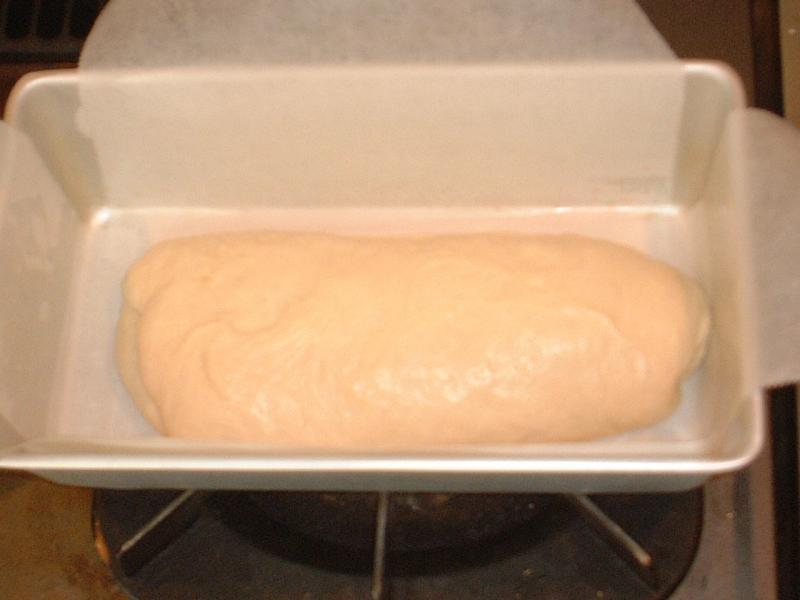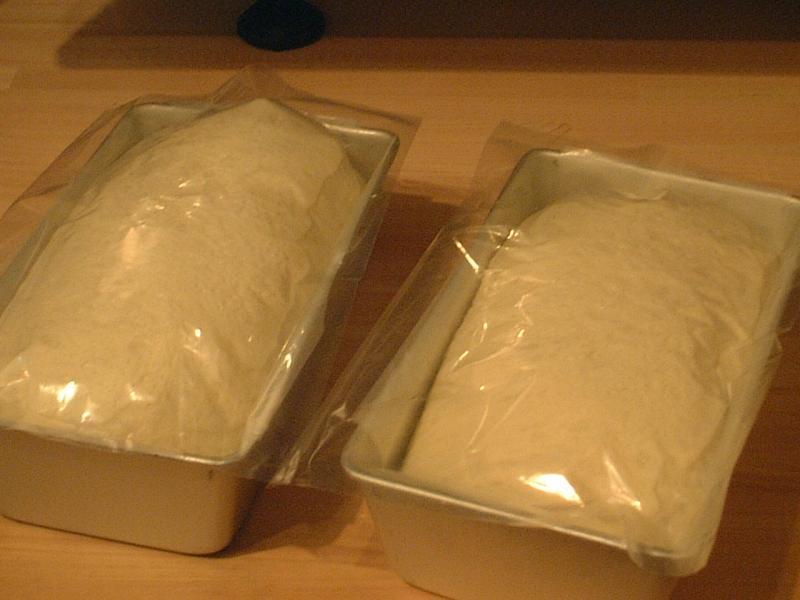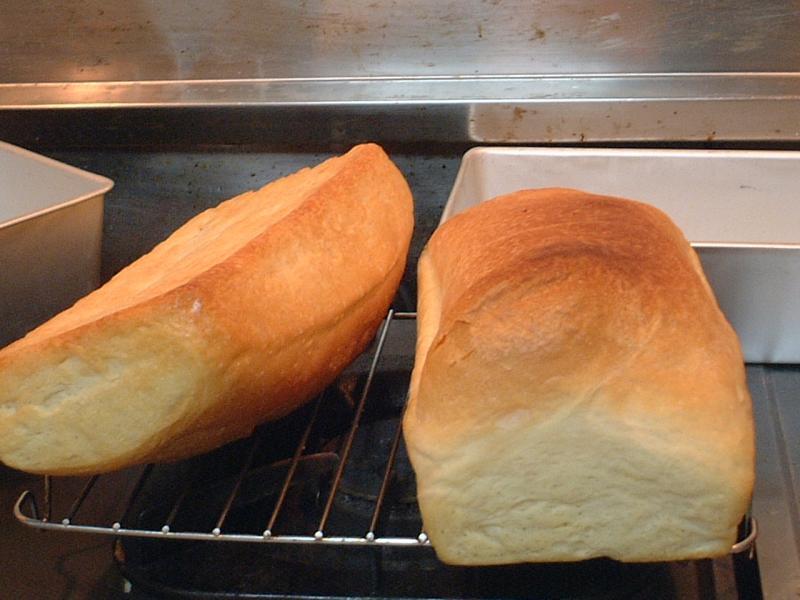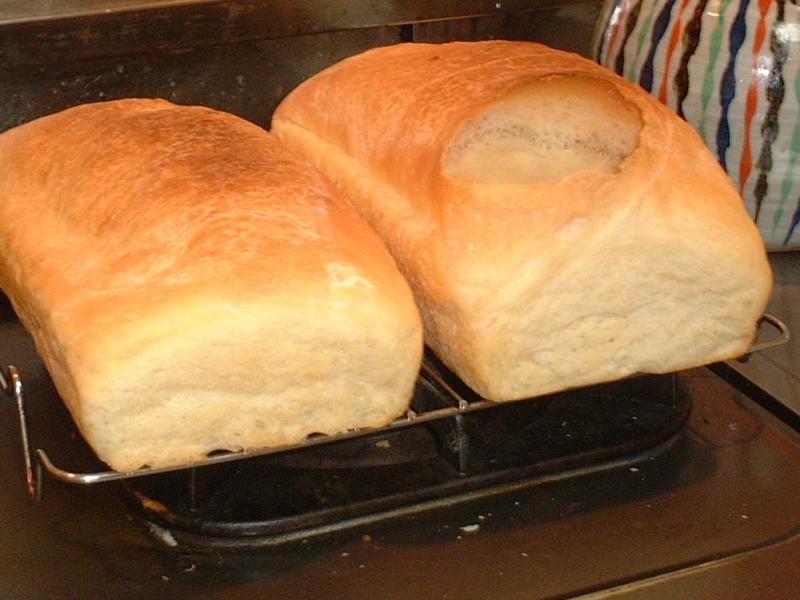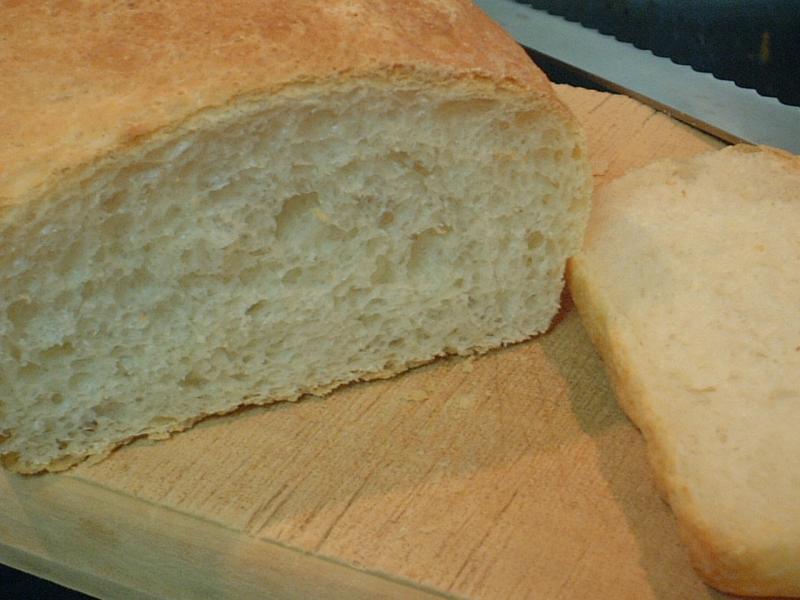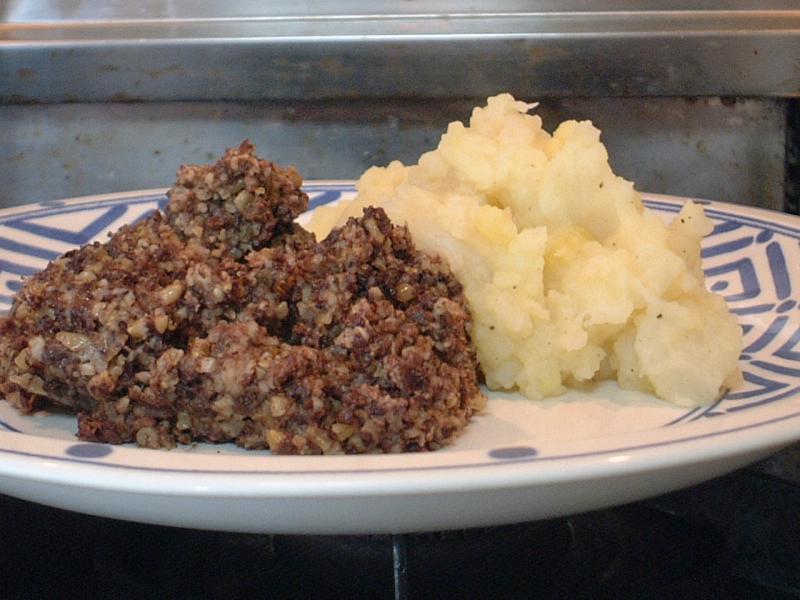-
Posts
1,728 -
Joined
-
Last visited
Content Type
Profiles
Forums
Store
Help Articles
Everything posted by Blether
-
Tonkatsu is of course Japan's adaptation of western food's pork cutlet. Talking about tonkatsu here on eGullet recently, and inspired by Prawncrackers's enthusiasm (and excellent home-prepared tonkatsu), I realised that I'm not convinced by the westerners-in-Japan meme that Maisen and Tonki are the pinnacle of the tonkatsu scene here in Tokyo. Casting about, I pulled my 1992 (!) copy of Rick Kennedy's excellent Good Tokyo Restaurants off the bookshelf, (blew off the dust) and looked up tonkatsu. Sure enough, two establishments are listed and they are... Maisen and Tonki. As I have noted elsewhere, Japanese dining site Tabelog lists plenty of tonkatsu-ya more highly-rated by Japanese diners than either of these. According to Japanese Wikipedia, cutlets were introduced to Japan in the early Meiji period, in the form of beef or chicken, breaded and fried in butter. The western-style restaurant Renga-tei, opened in Ginza in 1895, changed the meat to pork and the frying method to deep oil, and this was the beginning of tonkatsu (source: Ko-unsha's 2002 Igai to shiranai mono no hajimari). Later, beginning in the Showa period, the Tonkatsu created by the restaurant Ponchi-ken in Tokyo's Okachimachi spread throughout the country: pork cutlet served cut-up or in bite-size pieces for easy chopstick-eating, with cabbage, miso soup and pickles. Now tonkatsu by nature is not gourmet food, though as Butagumi shows it's possible to take a gourmet approach. It's generally a cheap, healthy, balanced meal that appeals to all sorts of people, and tonkatsu places are a dime a dozen. What interests me is, what appeals to Japanese diners to make a tonkatsu-ya more highly rated than others; how valid the eternal Maisen / Tonki axis is; what will appeal to foreign diners (and of course, to me ); and how well the ratings reflect the reality of the dining experience. I'm thinking to add to this thread when opportunity permits, each time I'm having tonkatsu and have the time (余裕) to report. When I have the chance I'll be referring to Tabelog and choosing some of the rated places. But I figure, why do it by myself ? Please post your tonkatsu restaurant experiences and let's find the good ones together. As I post it, this link returns Tabelog's ratings-ordered list of tonkatsu-ya for all of Japan. The top-ranked place isn't even in Tokyo - it's Jintei in Koriyama in Fukushima prefecture. Futaba, Tokyo's top-ranked, comes in 7th...
-
Hi, Kim. I hope your ma's bearing up under the strain. I had my first and so far only encounter with medically-imposed soft foods when I smashed my face off a newly surface-dressed road, aged 14 (dangerous contraptions, bicycles), and had reinforcing tape over my top lip for nigh on a month. It sure brings on vivid fantasies of all your favourite foods. Talk to your local St. Andrew Society and see if there's a Burns Supper (normally nicely placed in the depths of January's cold) that you can join ?
-
It's an old thread, but I'll add two comments. There is a tradition in the UK of using gooseberries or another sharp fruit accompaniment/sauce/dressing with mackerel (and to some extent with herring too). Ume will work well with mackerel, aji, sanma and so on (adjusting of course for overall salt). For the fish grill, I tear a short length of foil (just short of the length of the grill's grid, a piece shorter than it is wide) and fold the sides over the sides of he grid. The foil sags into the space between the cross-bars and forms a well for most or all of the fish oil that melts out: sometimes I get away with a clean grill pan, others it needs a normal washing. Hiroyuki, I've always liked that idea of seeing salmon as a white-fleshed, non-oily fish (especially the farmed kind which sometimes seems like just a matrix for delivering fish oil ).
-
Three minutes. Yes. A couple of weeks back, I gave a litre-of-milk-in-its-tetrapak straight from the fridge three minutes on high before putting it into bechamel. It was nicely warmed, but not so much as to create problems putting the remainder back in the fridge afterwards. I'll do that again.
-
Uh-huh. Mackerel is one of the fish that goes off fastest, perhaps the fish that goes off fastest, and is notorious for needing to be cooked absolutely fresh. Have you heard of shime-saba ? You might find it worth reading up on the theory behind that. You still don't say where you are and where you get the fish, so it's hard to help further. From this - - I wonder if you need to read up on basic saute technique. Could you mean hot teflon ? Fat to prevent overheating is a curious way to put it. Of course reading is one thing, but the only thing that counts in the kitchen is doing. When I was figuring out saute-ing of fish fillets, I ate less-than-perfect sauteed fish a number of times. In the end judging the temperatuire of your skillet is a combination of being used to the particular skillet, recognising the consistency of the oil as it reaches temperature, feeling the level of heat rising off the pan and being used to the heat-up time and the flame level needed once the fish is in the pan. I can't speak for Hiroyuki's idea that teriyaki isn't 'Japanese style'. With white fish, I like the Italian flour-and-fry-in-olive-oil approach. You barely need oil to fry fresh mackerel (and if you have mackerel that isn't fresh you'd be better giving it to the cat or deep-sixing it than frying it), but they'll work uncoated or with flour / oats / your choice of coating.
-
Great, yes, I'll (I'm sure we'll all) be intrigued to hear about it. (And we'll work out a meet-up next time, for sure). Fire away with any questions.
-
I suspect the answer to even cooking is to use a very, very hot grill. A whole, gutted fish that's an inch thick should cook fully in about 2 minutes per side, which should give skin with some browned patches (maybe blackened here and there) all over the skin, and cooked-but-still-juicy flesh right next to the backbone (round the bone is where you'll find it still raw if the fish is underdone). As for 'stink', there's stink and stink. If you grill good hamburgers, you'll fill the kitchen the smell of roasting, singe-ing fresh beef. With good, fresh fish you'll get the smell of roasting, singe-ing fish. If your fish isn't fresh, you'll get what I'd call a stink. What fish are you using, and from where ? If you're looking for the zen of Japanese fish-broiling, grill the fish's right-hand-side first, then its left, and serve with its left side uppermost, head pointing to the diner's left. YMMV.
-
This is too funny. Maybe Tsuji-san never visited Tsukiji ? Does he think the maguro are still caught in Tokyo Bay ?
-
... and both fast-burning and slow-burning energy. Good choice We had pizza-dough bread - a standard but wet white dough well kneaded, shaped and left to rise in pans till very well developed (for pizza, it's the same dough and kneading, but splitting into one-pizza pieces before rising, and shaping after). Yesterday it was about 20-21C (68-70F) inside the apartment and I let them rise five-and-a-half hours. Kneaded and shaped dough (sorry about the camera shake) After rising (under oiled plastic) There's a big bubble in one loaf that needs burst - cut and served simply this morning with butter and acompanied by coffee. This bread is just great - crusty, light, moist and open-crumbed and with that delicious long-rise flavour.
-
Your procedure needs to be: separate the cream from the rest; add cream back to the milk (if necessary) till it reaches 2%; then dilute the remaining cream till it's half-and-half, using enough of the "now 2%" milk to get there. If you want to do this, I suggest you either buy some commercial 2% milk for comparison, or remember what 2% milk's like, then as a first attempt, compare the taste & richness of the 2% milk with your separated raw milk. Add cream as needed to reach the same richness as the comparison 2% milk. That gives you a baseline for how much of your particular source's raw separated-cream needs added back, and you're fixed for the milk side of the split (caveat: you might find that the raw, separated milk is richer than 2%). You could do a half-and-half taste comparison for mixing milk back in to the cream to dilute it. In my experience from the days of milk-delivered-in-glass-bottles-in-the-morning in the 70's, the cream settles out of the milk gradually. When it arrives on the doorstep, there's a discernible layer of cream on top. After a day in the fridge, the cream is thicker, yellower, and the milk thinner & paler. After two days the contrast is greater, and at some point (after two days ? more ?) becomes stark. So the fat %age in the milk and in the separated cream changes over time. Your milk may fall from, say, a fully-mixed 5% to maybe 2% or 1%, and your cream rise from nothing when the milk's fully mixed, up through 20% and 30% and on to 45%, 50% or beyond. The half-and-half side of the deal gives the same problem as the 2% milk side - it's easy to mix equal quantities of skimmed-off cream with cream-adjusted milk to get 'half and half' by volume, but even if the milk is accurately at 2%, what was the richness of the cream to begin with ? In your situation, even if you know the overall fat concentration of the raw milk, unless you measure fat level in the cream and milk portions - using whatever lab process is appropriate - at the specific time you're preparing to adjust them, you'll never be able to calculate a solution in terms of measured volumes. I don't think the scientific-calculated approach will be your friend. So, I say, do the taste test. That, after all, is the point, isn't it ? Start by either (1) making sure you work with milk that has been sitting to separate for a consistent amount of time, and getting used to what measures you need to use, or (2) teaching yourself to judge by taste and appearance, each time. I kind of envy you the raw milk, having myself holidayed as a teenager at a place where we walked a mile or two across the fields to pick up milk directly from the farm. It's a nice memory, but I found the flavour too overpowering. Tolerable and interestingly tangy in tea or coffee - something i could get used to - but not very pleasant over breakfast cereal. Where I am now, I make the effort to seek out pasteurised milk in preference to the market-standard '120C/130C for 2 or 3 minutes' UHT long-life type.
-
That's proper Scottish butcher's haggis, a good one. You can't buy it anywhere in Japan that I know of - I have it in mind that it should be possible to import haggis from Australia. There are established suppliers, but I've never gone as far as making the enquiries. I think of haggis as simply a kind of sausage that's served by spooning it out of its skin - there's nothing to be afraid of. Like other sausages, there are good ones and, um, not so good ones. This one is peppery, rich and delicious, with a great texture, whole grains cutting the smooth softness of the long-cooked offal.
-
Beautiful meat dishes, percyn. LaCookrasha, nice red fish, rice and salad. I like your chicken, mgaretz. Great stuff, everyone. It's getting cold... broke out the haggis, neeps & tatties and photographed them badly:
-
- should read, 'halved, seeded fruit'.
-
Hi, Deltadoc. I enjoyed reading your post, but as a Brit (60's vintage) I don't understand your term 'tenderloin strap'. Would you mind explaining ?
-
In her book "Under the Influence of Bright Sunbeams", China de Burnay gives an Elizabethan recipe for Rose Hip Tart, flavoured with honey, ginger and (a generous amount of) nutmeg. The seeded fruit is boiled for 12-15 minutes with the other ingredients (8oz prepared hips, half pint water) before baking in an enclosed shortcrust shell.
-
Cteavin, you prompted me - for the first time in years - to refer to my copy of China de Burnay's "Under the Influence of Bright Sunbeams". This was a present back in the 80's - I'm a terrible present-receiver and though I read/browsed through it off and on, I think I barely cooked a single recipe, once (the fennel and potato dauphinoise ? An early-1900's recipe that she calls 'dauphinois'). The book's tagline is "centuries of natural cuisine in recipes for today". It draws from written records from Apicius onwards. Do you have a copy ? Examples of recipes are: Bean Butter (12th C) Cold fennel soup (from The Forme of Cury, the oldest English cookbook extant) Orange marinated Trout (Italian, 15th C) Apricot Pudding (1545) and this: Her bibliography is good reading for anyone interested in food history.
-

Great English Language Cookbooks Published Outside the US
Blether replied to a topic in Cookbooks & References
I've done a dis-service to a book I do find myself referring to several times a year (from which I have however quoted in other threads), Meg Cowie's Traditional Scottish Food, published by Chambers and now out of print. It's authentic and reasonably comprehensive, if somewhat brief, on the core traditional preparations. I understand Nick Nairn has published some good modern Scottish cookery books - did you mention him, Dougal ? I forget (I'll look upthread in a minute). I haven't seen any of them and I'm interested to hear from anyone who has used them or can recommend other Scottish titles. Also, have we had any Irish cookbooks mentioned ? Or Welsh ? -
I'd like to have seen her Outlook calendar. Yes: Of course if you're taking it as inspiration and accepting that you're not amiming to recreate the period product, fair enough, that's one approach and of no more or less value than an attempt at recreation. I'd love to know what the original method was.
-
I'm following this topic with interest. Is the genoise idea part of the recipes you're using as a basis for your experimentation ? Is it the suthentic old-time approach ? (Helenjp suggested recently that it's possible to make genoise by hand, but I'm still not sure I believe her ).
-
I don't especially agree; I think Subway is a valid choice here in Japan, if fast foods must: it's bread of a sort, and there is a non-white-plastic option; and the balance of vegetables is good for the genre. There are a couple of fillings I've ordered more than others, and I got into Subway because it was an easy lunch to pick up when I'd spent most of lunchtime swimming up and down. Then that branch closed. Why do you ask, GBaxter ?
-
feedmec00kies And Kasugai are also responsible for "Nodo ni Sukkiri" that was the long-awaited answer to my wish for a delicious minted-toffee-type mint in Japan. The funny thing is that I got over a taste for sweet things by the time I was about twenty years old. The memories do remain, though, as does the feeling !
-
You're right. My bad.
-
Yes. But... At sea level and atmospheric pressure, yes. Is that true at the pressure and temperature of domestic pressure cooking ? (And there's the (65% ?) presence of water in meat in the first place).
-
I've changed my mind (such as it is). Any marshmallow pierced on the end of a stick and toasted over a wood fire takes all seven of the top three places.


